ESP | ENG 1/2 MI ANÁLISIS DE LA PELÍCULA VENEZOLANA "LOS HIJOS DE LA SAL". Dir. Luis y Andrés Rodríguez
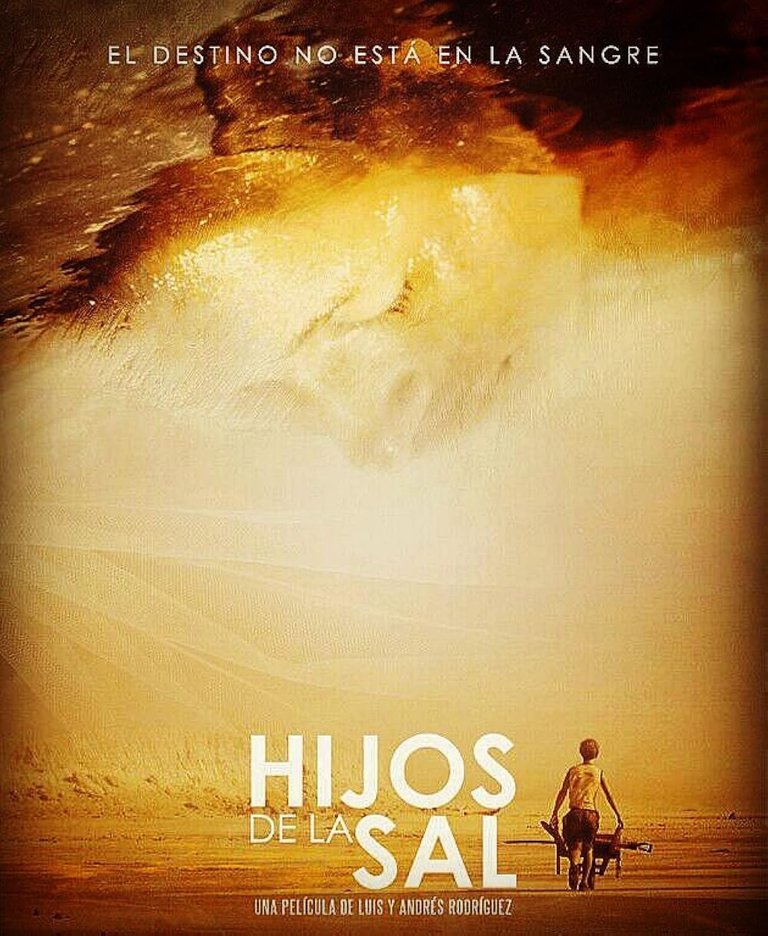
ESPAÑOL
El día de hoy quiero compartir un análisis profundo a una excelente película que todo cineasta debe ver, "LOS HIJOS DE LA SAL". Hace un año tuve la oportunidad de trabajar en la asistencia de dirección de la ultima Película de los Hermanos Rodríguez y fue todo un honor, no puedo creer como he ido escalando niveles en el mundo audiovisual, quise ver esta película de ellos y analizarla, algo que también me sorprendió gratamente es que el guion es de Carlos Tavares, un reconocido guionista venezolano que ha sido mi profesor y mentor durante 6 años aproximadamente.
En Venezuela hay películas que han ganado reconocimiento internacional pero el publico se ha cansado de ciertos patrones, pues en este caso, es una película que sorprende, es experimental como todo el cine de los Hermanos Rodríguez.
En fin! Comencemos!
Visualización
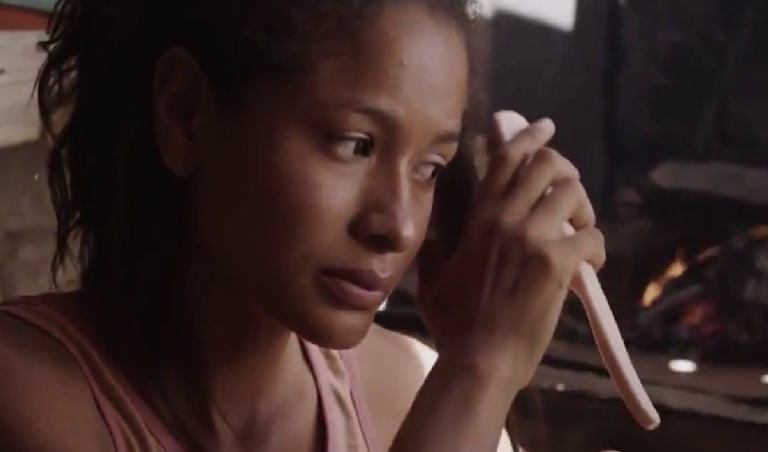
Al intentar comparar esta película con otras semejantes se me vinieron a la mente películas como "1,2,3 mujeres" y "el día que mis padres se fueron de viaje", ambas latinas; la primera narra la historia de una madre soltera que cría a su hijo con los pocos recursos que obtiene y la segunda es la historia de un niño que es abandonado por sus padres y termina siendo criado por el vecino de su abuelo; ambas tratan temas sensibles, la soledad y tristeza a temprana edad, la orfandad y la madurez temprana, sin embargo ninguna tan cruel y sensible como los hijos de la sal, que toca estos temas pero desde una realidad que también existe y la sociedad se hace ciega ante ello, y es el caso de la
convivencia con padres abusadores, violadores, agresivos y alcohólicos, pienso también que quieren plantear la crudeza de una situación tan triste como lo es la muerte de un padre
que deja en la orfandad a dos niños de muy corta edad que crecen en un ambiente precario, quieren mostrar la soledad y el dolor por la cual ellos se deben enfrentar.
Personajes: Sus características, lo positivo y negativo.
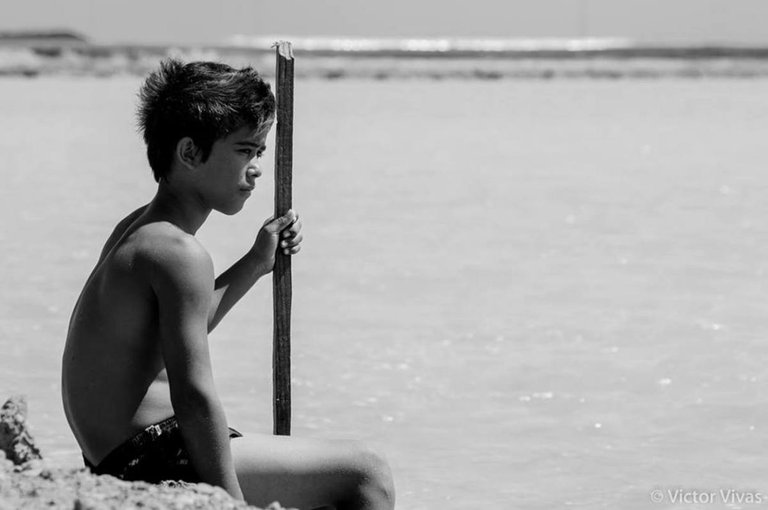
Enrique, Terry Goitía: Un niño tímido y sufrido, curioso que poco a poco va madurando para salir adelante después de la muerte de su padre, Enrique aunque trata de reprimir sus sentimientos, muestra el daño que su crianza y la muerte de su padre le ocasionaron revelando actitudes violentas y obscenas.
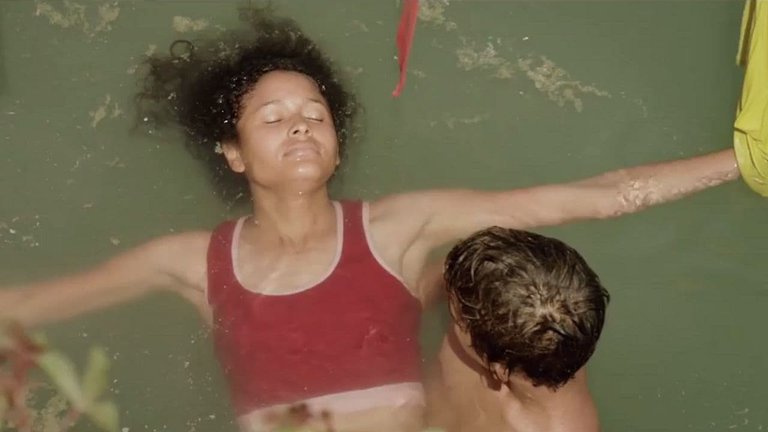
María, María Alejandra Jiménez: Una joven con carácter y también sufrida que debe ser jefa de familia y la imagen materna de su hermano menor, quedó marcada por el abuso de su padre y desea superar esa realidad.
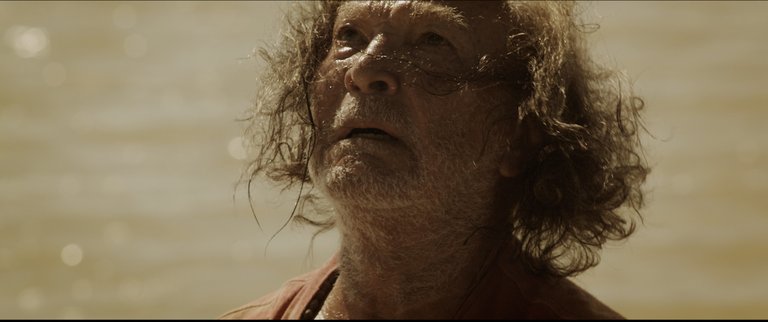
Evaristo, José Torres: Es un señor enfermo y moribundo que como última voluntad desea que sus hijos lo incineren en el mar en contra de las tradiciones de su pueblo. Era un hombre alcohólico y abusivo con su hija adolescente.
Santiago, Aníbal Grunn: Es uno de los viejos del pueblo que trabajan en las salinas, ex compañero de Evaristo, también alcohólico y frecuenta un cabaret, llevará a Enrique por el mal camino y esto tendrá malas consecuencias para él.
Maritza, Yixi Villegas: Es una de las mujeres del cabaret, a pesar de ser adulta, coquetea con Enrique. Es irrespetuosa y de la mala vida, aunque parece disfrutarlo también es víctima de su estilo de vida.
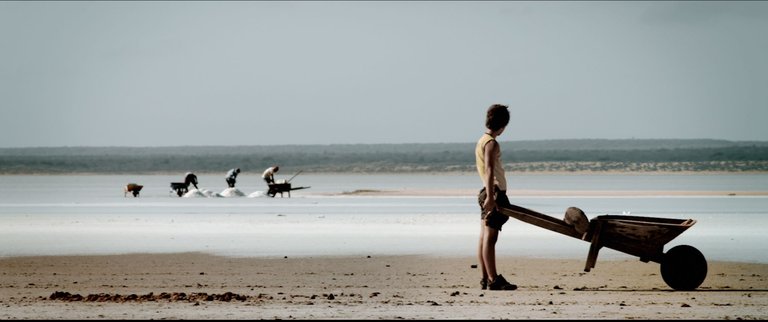
Lo más importante de la película para mí
Para mí, es el tema de una familia disfuncional, un padre abusivo que está a cargo de sus hijos, los cuales crecen en un ambiente deprimente, con secuelas emocionales y al quedar solos, la vida misma los obliga a actuar para continuar, a pesar que los malos recuerdos aún los persiguen, ellos van realizando acciones para dejar su pasado atrás y salir adelante por su cuenta.
Como buena cineasta quiero hablarles de la parte técnica
Les quiero hacer un análisis técnico de uno de mis fotogramas favoritos, fue difícil escoger ya que me gusta mucho la película a nivel de dirección de fotografía. Escogí el fotograma del minuto 8:47, Evaristo caminando en la autopista, a duras penas soporta el peso de la carreta.
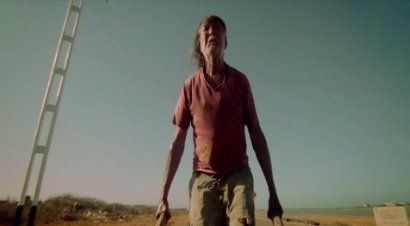
Encuadre (Ángulo: Picado, contrapicado, normal, cenital, Nadir)
Ángulo contrapicado. El cual hace ver el esfuerzo de Evaristo a través de su rostro.
Planos (Gran plano general, Plano general, Plano americano, Plano medio largo, Plano medio corto, Primer plano, Primerísimo primer plano, Plano detalle)
Es un plano americano, ya que cubre desde un poco antes de la cabeza de Evaristo hasta encima de sus rodillas.
Campo (Abierto, Moderado, Cerrado)
El fotograma muestra un campo moderado, ya que es lo suficientemente completo para ubicarnos en el espacio sin estar abierto por completo.
Composición (Regla de tercios, Espacio negativo, Punto de fuga)
El personaje se encuentra en todo el centro de la imagen ocupando los cuadros centrales, esta imagen rompe la regla de los tercios, sin embargo, le da protagonismo a Evaristo, el espacio negativo lo ocupa el escenario dónde se desarrolla la acción, la cual tiene poca textura y colores suaves.
El punto de fuga: Las líneas de los bordes de la autopista y la arena, lineales y paralelas, que se van ampliando hacia adelante, tiene un punto de fuga que se pierde detrás del personaje.
Movimientos internos
Se realiza un paneo que sigue el andar forzado de Evaristo con la carreta y el fuerte viento moviendo su cabello. La cámara va retrocediendo a medida que el personaje avanza.
Iluminación (El tipo de iluminación que se usó: natural o artificial, Las sombras que produce: fuertes o difusas, La dirección que sigue dentro del encuadre: cenital, frontal, enfática, lateral o contraluz)
La iluminación en este plano es natural y muestra sombras en su rostro y cuerpo, sobretodo del lado izquierdo del personaje. La luz proveniente del sol, aparentemente en horas del mediodía o la tarde debido a su intensidad, parece estar detrás del personaje creando un contraluz.
Tono y color: Paleta de colores primarios o secundarios, cálidos o fríos, contraste y complemento en la imagen, colores de la ropa de los personajes
En el escenario se evidencian colores primarios y secundarios: Amarillo, azul, tonos marrones, que se mezclan naturalmente y muestran serenidad.
En la ropa de Evaristo, igualmente hay colores primarios y secundarios, rojo y marrón, los cuales le dan carácter al personaje, su ropa se ve maltratada debido a su difícil vida.
El color rojo representa la violencia en el carácter y rudeza de este personaje.
Hasta aquí la primera parte de este análisis, en esta primera parte se analizó el mensaje, los personajes y los referente a la fotografía (planos e iluminación).
Nos vemos pronto!
ENGLISH
Today I want to share a deep analysis of an excellent film that every filmmaker should see, “LOS HIJOS DE LA SAL”. A year ago I had the opportunity to work as assistant director of the last film of the Rodriguez Brothers and it was an honor, I can not believe how I have been climbing levels in the audiovisual world, I wanted to see this film of theirs and analyze it, something that also pleasantly surprised me is that the script is by Carlos Tavares, a renowned Venezuelan screenwriter who has been my teacher and mentor for about 6 years.
In Venezuela there are films that have gained international recognition but the public has grown tired of certain patterns, well in this case, it is a film that surprises, it is experimental like all of the Rodriguez Brothers' films.
Anyway! Let's begin!
Visualization

When I tried to compare this film with other similar films, films like “1,2,3 mujeres” and “el día que mis padres se fueron de viaje” came to my mind, both latin films; the first tells the story of a single mother who raises her son with the few resources she has and the second is the story of a boy who is abandoned by his parents and ends up being raised by his grandfather's neighbor; both deal with sensitive issues, loneliness and sadness at an early age, orphanhood and early maturity, but none as cruel and sensitive as Los hijos de la sal, which touches on these issues but from a reality that also exists and society is blind to it, and it is the case of the
I also think that they want to raise the rawness of a situation as sad as the death of a father who leaves an orphan in the orphanage.
They want to show the loneliness and pain that they have to face.
Characters: Their characteristics, positive and negative.

Enrique, Terry Goitía: A shy and long-suffering, curious boy who little by little matures to get ahead after his father's death.
Enrique, although he tries to repress his feelings, shows the damage that his upbringing and the death of his father caused him by revealing violent and obscene attitudes.

María, María Alejandra Jiménez: A young woman with character and also suffering who must be head of the family and the maternal image of her younger brother, she was marked by her father's abuse and wishes to overcome that reality.

Evaristo, José Torres: He is a sick and dying man who, as his last wish, wants his children to cremate him at sea against the traditions of his people. He was an abusive man with his teenage daughter and an alcoholic.
Santiago, Aníbal Grunn: He is one of the old men of the town who works in the salt mines, former partner of Evaristo, also an alcoholic and frequents a cabaret, he will lead Enrique astray and this will have bad consequences for him.
Maritza, Yixi Villegas: She is one of the women in the cabaret, despite being an adult, she flirts with Enrique. She is disrespectful and of the bad life, although she seems to enjoy it, she is also a victim of her lifestyle.

The most important thing about the film for me
For me, it is the theme of a dysfunctional family, an abusive father who is in charge of his children, who grow up in a depressing environment, with emotional sequels and when they are left alone, life itself forces them to act to continue, even though bad memories still haunt them, they take actions to leave their past behind and move forward on their own.
As a good filmmaker, I want to talk to you about the technical side
I want to make a technical analysis of one of my favorite frames, it was difficult to choose because I really like the film at the level of cinematography. I chose the frame at minute 8:47, Evaristo walking on the highway, barely supporting the weight of the cart.

Framing (Angle: Steep, upright, normal, zenithal, Nadir)
Contrapicado angle. Which shows Evaristo's effort through his face.
Shots (Wide shot, General shot, General shot, American shot, Medium long shot, Medium short shot, Close-up, Close-up, Close-up, Detail shot)
This is an American shot, as it covers from just before Evaristo's head to above his knees.
Field (Open, Moderate, Closed)
The frame shows a moderate field, as it is complete enough to place us in space without being completely open.
Composition (Rule of Thirds, Negative Space, Vanishing Point)
The character is in the center of the image occupying the central frames, this image breaks the rule of thirds, however, gives prominence to Evaristo, the negative space is occupied by the stage where the action takes place, which has little texture and soft colors.
The vanishing point: The lines of the edges of the highway and the sand, linear and parallel, widening forward, has a vanishing point that is lost behind the character.
Internal movements
A panning shot follows Evaristo's forced walk with the cart and the strong wind moving his hair. The camera moves back as the character moves forward.
Lighting (The type of lighting used: natural or artificial, The shadows it produces: strong or diffuse, The direction it follows within the frame: zenithal, frontal, emphatic, lateral or backlight)
The lighting in this shot is natural and shows shadows on his face and body, especially on the left side of the character. The light coming from the sun, apparently at midday or afternoon hours due to its intensity, seems to be behind the character creating a backlight.
Tone and color: Palette of primary or secondary, warm or cold colors, contrast and complement in the image, colors of the characters' clothing
In the scenery, primary and secondary colors are evident: yellow, blue, brown tones, which blend naturally and show serenity.
In Evaristo's clothes, there are also primary and secondary colors, red and brown, which give character to the character, his clothes look battered due to his difficult life.
The red color represents the violence in the character and rudeness of this character.
So far the first part of this analysis, in this first part we analyzed the message, the characters and the photography (shots and lighting).
See you soon!
📷: Web
📝: DeepL.com
You can check out this post and your own profile on the map. Be part of the Worldmappin Community and join our Discord Channel to get in touch with other travelers, ask questions or just be updated on our latest features.
Hello and welcome to the community, @jenniart. It's lovely to have you here. Please be aware of the community rules. There is zero tolerance for plagiarism, or any AI-generated content. Only original content is supported. Make sure your images are copyright-free. Engagement with other authors in the community is encouraged. I enjoyed your review and I look forward to seeing more of you in the community!🌺
Congratulations @jenniart! You have completed the following achievement on the Hive blockchain And have been rewarded with New badge(s)
Your next target is to reach 800 upvotes.
You can view your badges on your board and compare yourself to others in the Ranking
If you no longer want to receive notifications, reply to this comment with the word
STOPBienvenida @jenniart un placer escucharte y saber un poco de ti.
Muy interesante este post que nos compartes, ya que eres especialista en el nicho de cine.
Sería muy genial conocer más de ti.
Muy interesante está película y tu análisis, la anotaré para verla.
Sinceramente recomiendo verla, tómala en cuenta 💕
Muy interesante tu apreciación técnica de la película, me gusta aprender cosas nuevas y analizar desde un ángulo diferente. Probablemente la próxima vez que vea una película tenga en cuenta tus datos y me fijaré en ellos 🙏🏻
Sii creeme que una película también se puede disfrutar más que sólo por su trama, también la fotografía, el sonido... Me alegra poder cambiar tu perspectiva, mi próximo post será el análisis del sonido de esta película 😋 también te la recomiendo, es un poco fuerte pero buena.